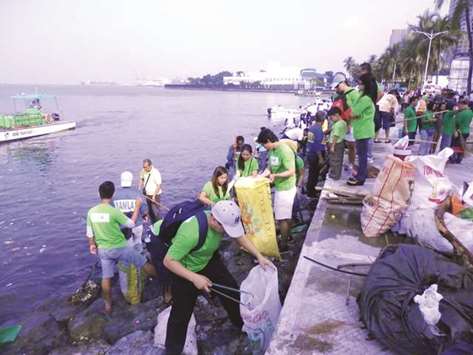Today, the bay has become the dirtiest and biggest garbage dump, after years of human abuse and neglect. Fishes, shrimps, crabs, lobsters that were once plentiful have disappeared, and those left are no longer fit for human consumption. Swimming is prohibited, and thousands of tonnes of muck and debris, floating and sunken, are waiting to be collected.
Pasig River is dead, her epitaph is reflected in mire and filth, a testament to government insensibility. The river’s role in history can only be emblazoned in memory; it has long passed the corridors of time. Historical treasures and legacies transcend time as when Jose Rizal in his youth paid tribute to “the river of my dreams” in song and verse called “A Orillas del Pasig,” and told of love and pain between two lovers along its banks in “Noli Me Tangere.”
Even worse than Manila Bay, the river has not been dredged to remove muck on the river bed, including tonnes of garbage that caused the total depletion of oxygen, killing all organic matters and resulting in disgusting stench and the proliferation mosquitoes. Even Malacanang’s windows fronting the River have been closed permanently to avoid and hide such embarrassment.
During the Spanish era, the River was almost 200m wide. Today it has narrowed to less than 100, not so much due to natural accretion, but due to the illegal reclamation by rich and greedy factory owners who also dump into the river toxic effluents from their factories. The River was once the main transport artery for commerce and trade; ships carrying cargoes and agricultura1 products from Tayabas and from other places in the South also ferried hundreds of passengers in their casco de barco from Laguna to Manila and back. Today, it can only boast of a staggering “ferry service” with passengers nauseated by the horrible stench of the turbid polluted water.
Laguna de Bae, (sometimes spelled “Bay” pronounced “bah-eeh”) is the biggest inland fresh water lake in Asia, with an area of more than 920sq km. It is estimated that this natural resource can amply supply the fresh water needs of millions of homes or the whole Metropolitan Manila and its environs. The lake’s shoreline, which is about 230km, extends from Laguna to Rizal and Metro Manila. During the time of the Spaniards, the Los Barcos de Laguna dropped anchor in a nondescript but strongly-built pantalan in the town of Bae; the cascos traverse the lake toward Pasig carrying cargoes and passengers to the harbour in Manila. Here, fishermen happily earned their livelihood catching varied fresh water species found only in the lake such as karpa, dalag, ayungin, biya, maritiniko, hito, igat, and other fresh water fishes.
Today, the lake is the shallowest in the world. Its high pollution count also contains toxic industrial chemicals from almost 2,000 factories around it. Plastic and all kinds of waste dumped by these factories and by thousands of senseless people through the years have accumulated without any visible steps being taken to save it from becoming a “dead lake.”
There are at least 10mn “civilised” people living in the area who exacerbate this horrible situation. The lake has also been defaced and destroyed even more by hundreds of hectares of ugly fish pens for cultured bangus which, according to buyers “taste like burak or dirty mud. These pens are owned by rich and politically-protected entrepreneurs to the consternation of the poor fishermen now in dire poverty and are willing victims of labour exploitation, in order to survive.

